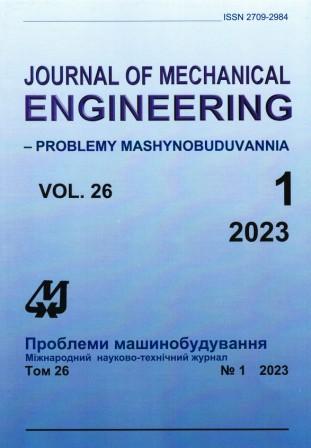Aeroelastic Characteristics of Rotor Blades of Last Stage of a Powerful Steam Turbine
Abstract
Blades of powerful steam turbines are subjected to significant unsteady loads, which, in some cases, can lead to the appearance of self-excited oscillations or auto-oscillations. These fluctuations are extremely dangerous and negatively affect the life time of the blading. When developing new or upgrading existing turbine stages, it is necessary to carry out research on the aeroelastic behavior of the rotor blades. As a result of the modernization of a low-pressure cylinder of a 1000 MW steam turbine, the length of the rotor blades of the last stage increased to 1650 mm. In this regard, a numerical analysis of the aeroelastic characteristics of the last-stage rotor blades in the nominal operation mode was carried out. The analysis used the method of solving the coupled problem of unsteady aerodynamics and elastic blade vibrations, which allows the prediction of the amplitude-frequency spectrum of unsteady loads and blade vibrations in a viscous gas flow. The paper presents the results of numerical analysis of aeroelastic characteristics of the last stage rotor blades both for the mode of controlled harmonic oscillations with a given amplitude and inter-blade phase shift, and for the mode of coupled oscillations of the blades under influence of unsteady aerodynamic forces. The results of the simulation of coupled oscillations of blades for the first five natural forms are presented in the form of the time distribution of displacement of the blade peripheral cross-section, as well as the time distribution of forces and moments acting on the peripheral cross-section. The corresponding amplitude-frequency spectra of displacements and loads in the peripheral section are also given. The results of the calculations showed a positive damping of oscillations, the absence of flutter and auto-oscillations for the first five natural forms of oscillations of the blades in the nominal operation mode of the steam turbine.
Downloads
Published
Issue
Section
License
Copyright (c) 2023 Л. В. Колодяжна, Ю. А. Биков

This work is licensed under a Creative Commons Attribution-NoDerivatives 4.0 International License.
All authors agree with the following conditions:
- The authors reserve the right to claim authorship of their work and transfer to the journal the right of first publication of the work under the license agreement (the agreement).
- Authors have a right to conclude independently additional agreement on non-exclusive spreading the work in the form in which it was published by the jpurnal (for example, to place the work in institution repository or to publish as a part of a monograph), providing a link to the first publication of the work in this journal.
- Journal policy allows authors to place the manuscript in the Internet (for example, in the institution repository or on a personal web sites) both before its submission to the editorial board and during its editorial processing, as this ensures the productive scientific discussion and impact positively on the efficiency and dynamics of citation of published work (see The Effect of Open Access).

